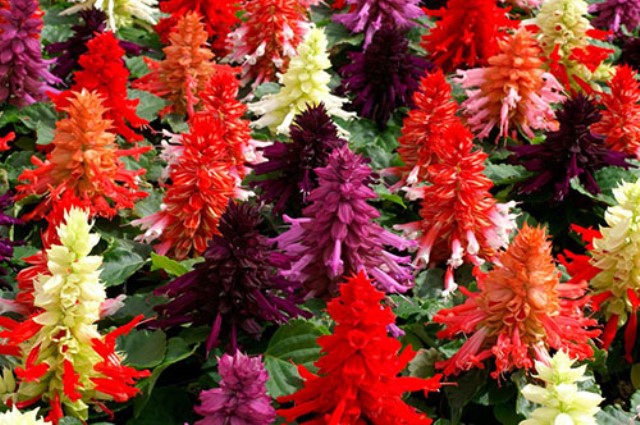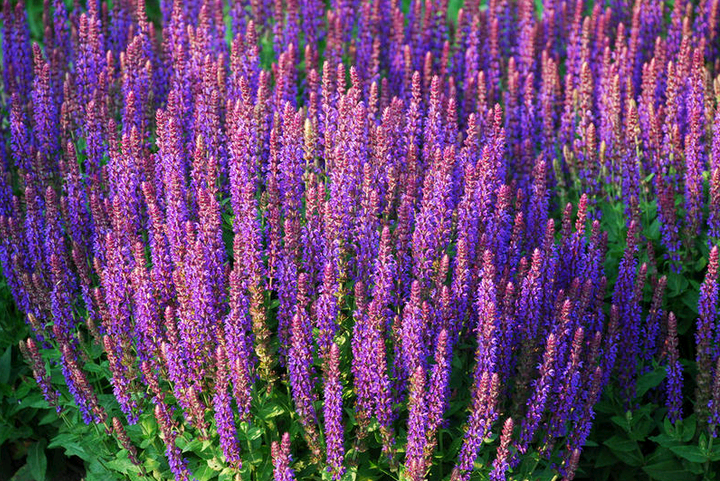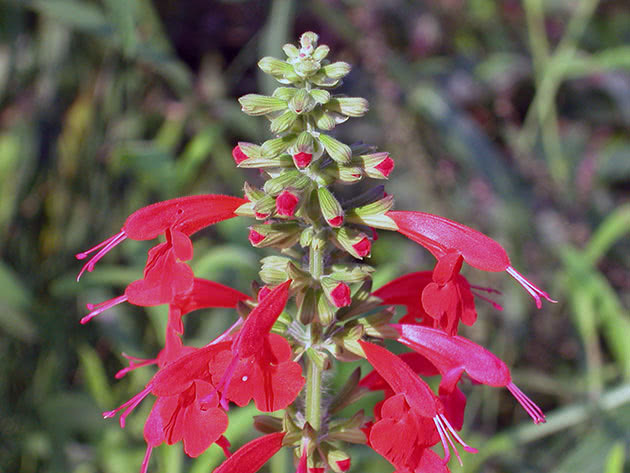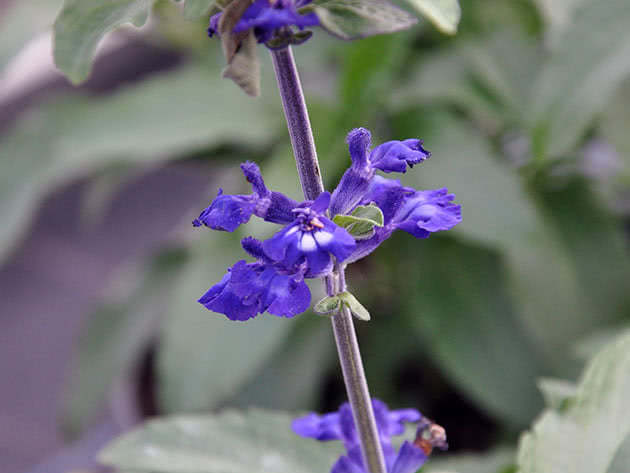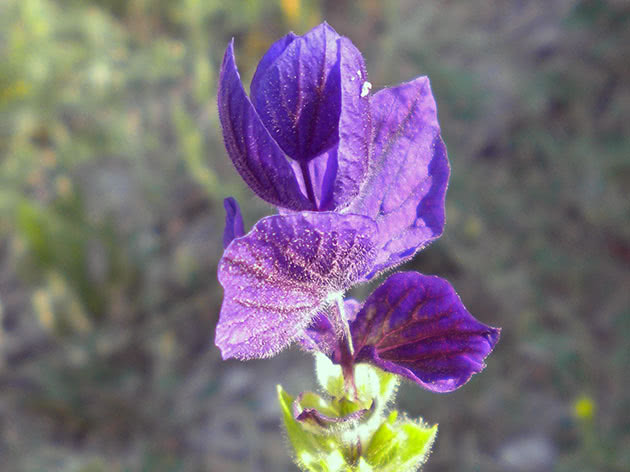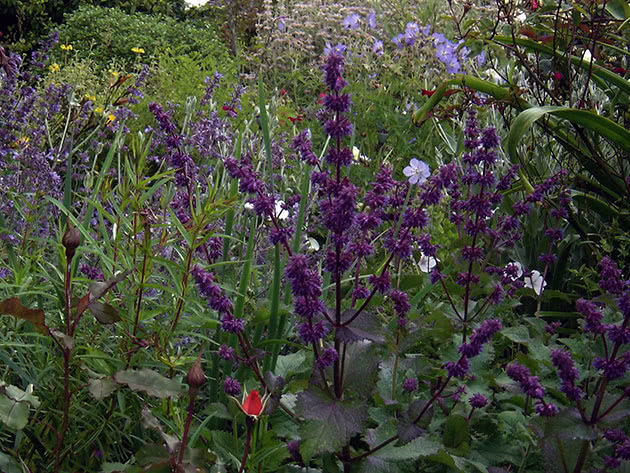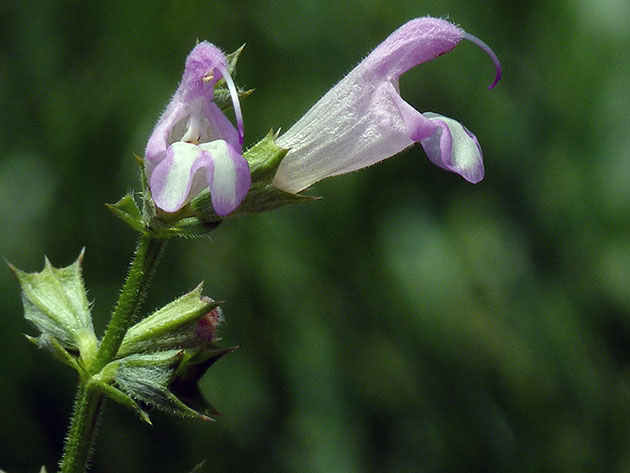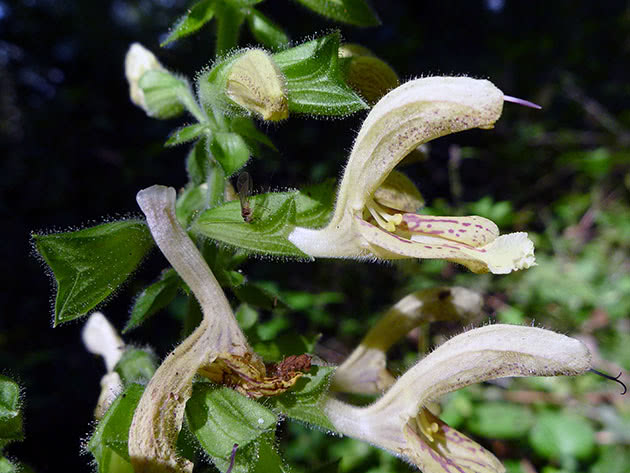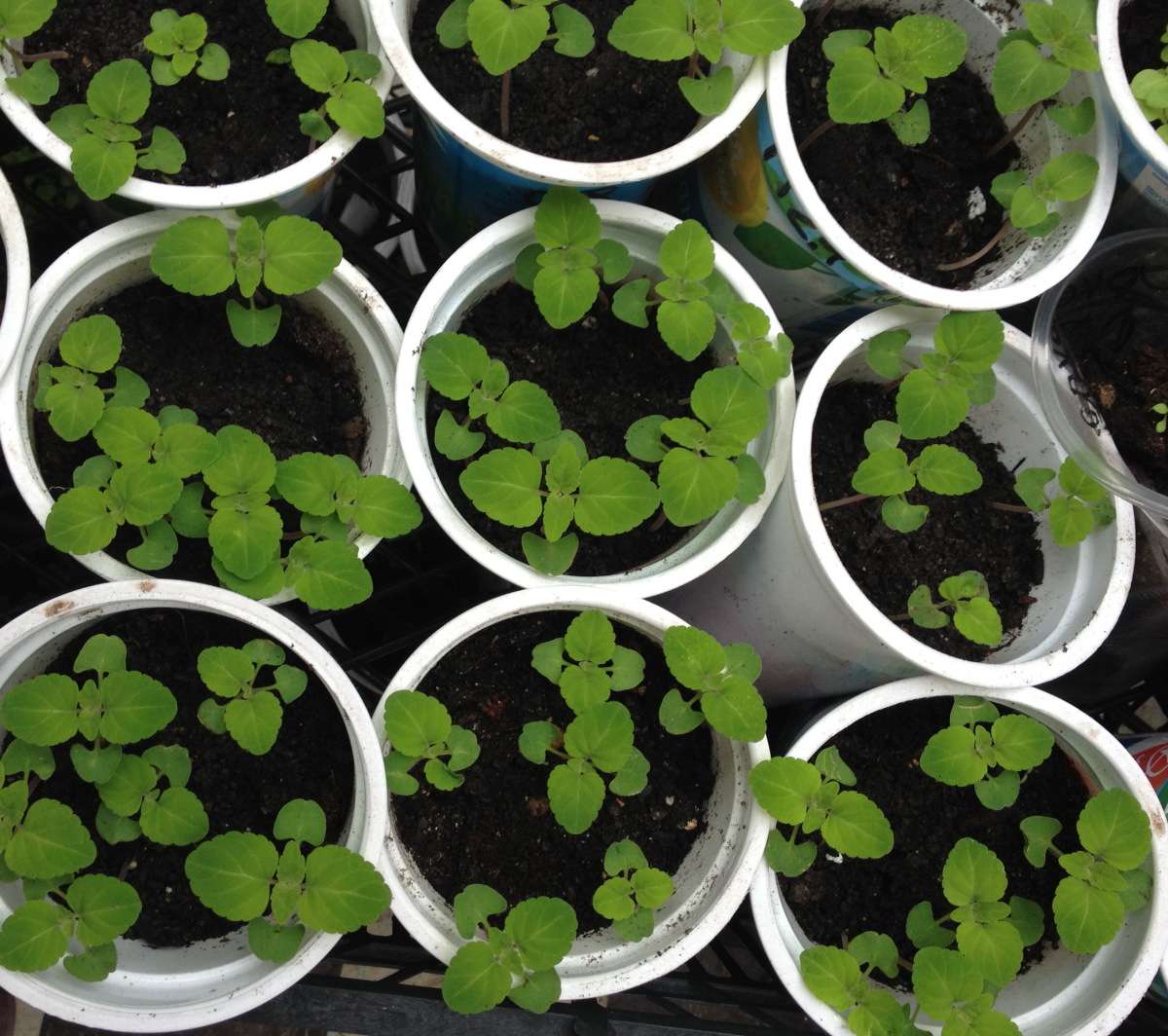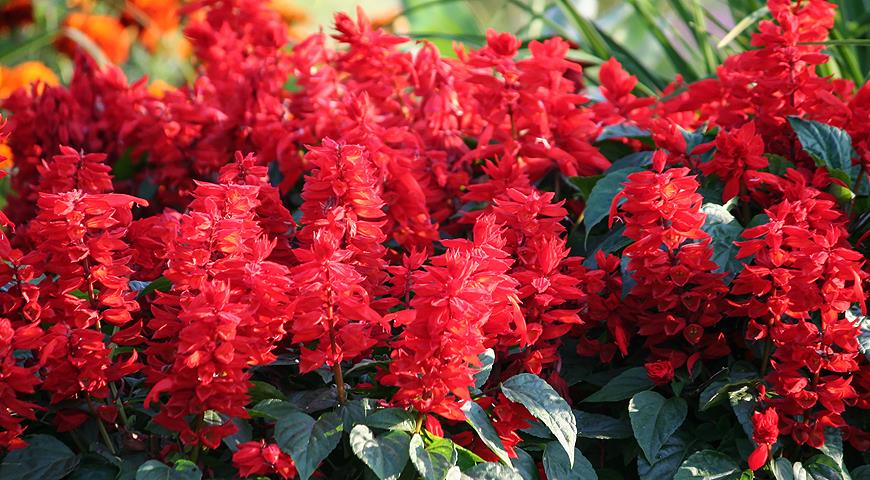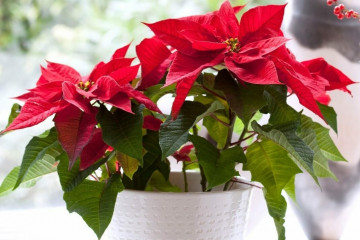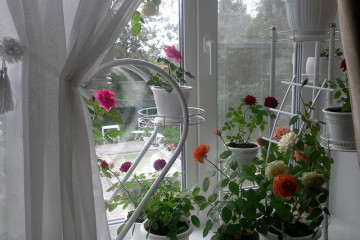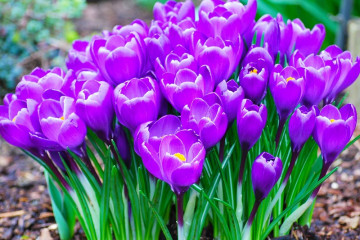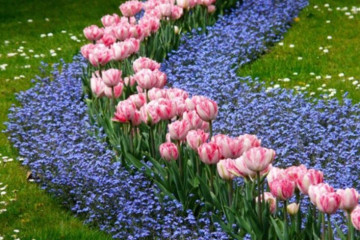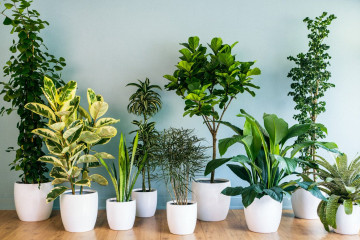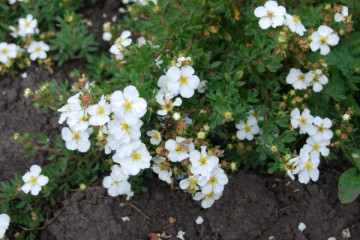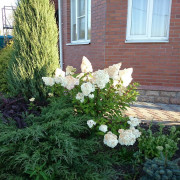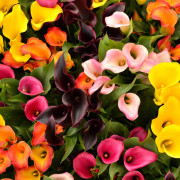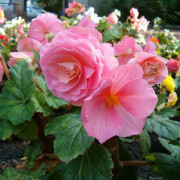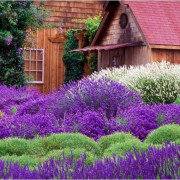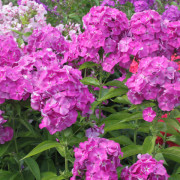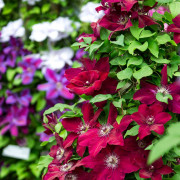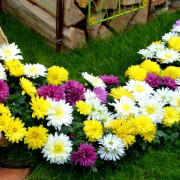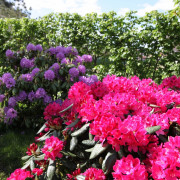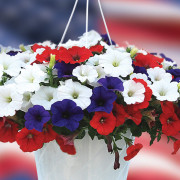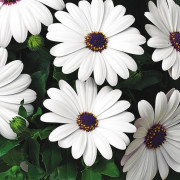Flowers salvia (salvia) or sage - characteristics of a perennial plant
Content:
Decorating a personal plot is a headache for absolutely all summer residents. As a result, everyone wants to get a beautiful flower bed, which will not only delight with its appearance, but also not require constant care. There are a huge number of annual and perennial flowers on the market. Which one to choose? Experienced florists recommend paying attention to salvia flowers.
What does salvia or sage look like?
Salvia is a flower, the description of which begins with the medicinal qualities of the plant. It bears another better known name - sage. The literal translation "salvia" is healthy. Plant height varies from 25 to 80 cm. Perennial salvia can even reach 1.5 m. Most often it looks like a bush or semi-bush.
What family does it belong to
What is Salvia? This is a plant that belongs to the Yasnotkov family. Decorative, flowering perennial, which is not only medicinal, but also essential oil. Its use is possible in the form of a medicinal tincture or as a condiment.
It grows in almost all tropical regions.
In its natural environment, it grows in sunny places. He loves rocky grounds, wastelands and the most dry fields.
Briefly about the history of appearance
The first mention of the salvia flower can be found in the literature of the times of the Roman Empire. It was introduced to Europe much later, around the 18th century. At that time, a real boom in the development of decorative floriculture and horticulture began.
Plant characteristics
Outwardly, the flower looks very unusual. In some countries it is called “sacred herb”. The root of the culture is powerful, lignified, has many branches. Stems are straight, rich in leaves, woody in the lower part, softer in the upper part.
The culture exudes a strong aroma. Small flowers are collected at the end of the shoot in an inflorescence that resembles an ear.
Since ancient times, salvia has been credited with medicinal qualities. There is a belief that it can prolong life. Sage tincture helps to treat coughs, relieves acute toothache, and relieves colds. Salvia officinalis, or salvia officinalis, is the most popular spice in Britain.
Subtropical varieties
The division of varieties according to climatic zones is due to different flowering periods. Also, care requirements and response to temperature changes depend on the growing region.
Salvia Divinorum
Salvia divinorum, or salvia divinorum, is the most famous variety, which is the most thermophilic and does not tolerate frost at all.
Salvia sparkling, or brilliant (Salvia splendens)
Perennial Salvia brilliant is a perennial with a long ripening period. On average, this period varies from 100 to 120 days. Salvia brilliant is the most frequently used flower in the formation of urban flower beds and flower beds.
Salvia bright red (Salvia coccinea)
Salvia red is a short plant that can bloom from early summer to the very frost. For the most part, it has inflorescences of bright red, purple color, there are varieties with dark pink flowers.
Mealy salvia (Salvia farinacea)
Mealy salvia is a perennial that can bloom for a long time even under unfavorable conditions. Plant height - 50-70 cm. Outwardly it resembles a pyramidal bush. Blooms from late August to mid-November. Long inflorescences are presented more often in blue, and sometimes in white.
Mediterranean species
All varieties of sage salvia are divided into three groups:
- 1st - representatives of the American subtropics;
- 2nd - Mediterranean;
- 3rd - cold-resistant.
Salvia green, or variegated (Salvia viridis)
The second name of this flower is variegated salvia. Bracts are bright, covered with fluff. Most often they are colored purple, sometimes pink.
Salvia verticillata (Salvia verticillata)
A short plant with oddly shaped leaves and purple flowers. The stems are heavily pubescent. In inflorescences 5-10 flowers are collected.
Dandelion-leaved Salvia (Salvia taraxacifolia)
Salvia taraxacifolia is a root-leafed crop. Straight stems practically do not branch. The inflorescences are simple, not long. A pale pink corolla is located on each flower.
Salvia Jurisicii
Another species, the cultivation of which is absolutely of no interest to gardeners. Refers to weeds. Planting in Russia is not recommended.
Frost-resistant varieties
Cold-resistant varieties grow in temperate climates. They begin to bloom only in the second year of life. Even strong cold is perfectly tolerated.
Salvia oak, or forest (Salvia nemorosa, Salvia sylvestris)
Salvia oak, or as it is also called oak sage salvia nemorosa, caradonna, is a low bush. Branched shoots, pubescent. Inflorescences with a corolla of bright purple color. Blooms all summer and autumn.
Salvia glutinosa
One of the tallest members of the species. In favorable conditions, it can reach 1 meter. The leaf is beautiful, of an unusual ovoid shape. During the flowering period, it is colored olive.
Lush Salvia (Salvia superba)
Its spike-shaped inflorescences can be painted in different colors. The height of the plant is 60-70 cm. There are many varieties on the market that differ not only in the color of the crop, but also in the shape of the inflorescences.
How salvia reproduces
Sage propagates by seed. Sometimes experienced gardeners resort to propagation by cuttings.
Growing from seeds
The seeds of the plant can be independently collected from the representative of the species you like.They can also be purchased from a specialist store.
Time to board
For planting crops in seedlings, the time period from February to March is suitable.
Choice of capacity
Sowing seeds of future seedlings is best done in special boxes. Some plant them in the so-called "snails".
Soil and seed preparation
The substrate must be thoroughly moistened before planting.
It is allowed to sow superficially or deepen the seeds by no more than 2 mm. The optimum temperature in the room where the seedlings are grown is 20-25 degrees. The first leaves will appear in about 14-18 days.
Seedling care
If a container with a lid is used, it must be constantly ventilated. Watering is best done with a fine spray bottle.
Dive and transfer
Before planting a seedling in open ground, you need to make two picks. The first is carried out when the third true leaf appears. Then the young sprout is transplanted into another container. The distance between plants should not be less than 5-7 cm.
The second pick is carried out exactly 21 days after the first. In this case, it is necessary to transplant the sprouts into separate cups.
Propagation by cuttings
Salvia cuttings are rarely used. The method is long and not always successful. This type of reproduction is only suitable for perennial representatives of the species. At the time of autumn pruning before wintering the plant, it is necessary to select several of the strongest and healthiest shoots. You need to store them in a dark and dry place, after wrapping them in a wet cloth.
Landing in the ground is carried out in the spring, in April.
Features of care in the garden
Planting and caring for a salvia plant consists in performing a number of simple activities.
What conditions do Salvias like
The plant loves the sun. It is not recommended to plant it in the shade. The soil under the flower should be moist but well-drained. Once a year, gardeners are advised to water it with organic infusion.
What is the plant afraid of
For this species, it is better not to add water than to pour it over. Salvia cannot stand her stagnation. The consequence may be the death of the root system. Sage also reacts poorly to strong gusts of wind.
Watering
Watering should be carried out only if the soil is completely dry.
Mulching
In order to avoid drying out, it is recommended to cover the ground around the plant with mulch. For these purposes, hay, mown grass, peat are suitable.
Loosening
Regardless of whether mulching has been carried out, you should regularly loosen the soil around the plant. This procedure allows you to saturate the root system with the much-needed oxygen.
Top dressing
In the summer, the plant needs to be fed. It is enough to perform this procedure only twice a season. The first time - during young seedlings, the second time - during the period of active budding. How to feed salvia? Almost any complex fertilizers are suitable for her.
Transfer
The plant can be transplanted with the whole bush, or by partial division. To do this, the plant is dug in a circle and, depending on the chosen method, part of the culture or the entire bush is transplanted.
When and how it blooms
The flowering time and its duration depend not only on the variety, but also on the growing conditions.
Types of flowers
Tubular pyramidal flowers are collected in inflorescences. Depending on the variety, their number can be up to 100 pieces. The length of each is at least 20 cm.
Flower shapes
Regardless of the variety, all inflorescences are spike-shaped. The stem is literally covered with flowers completely.
Flowering period
The flowering period of sage varies depending on the variety.
Changes in care during flowering
During the period of active budding and flowering, it is necessary to reduce watering, but the soil should not be allowed to dry out. Fertilizing with mineral fertilizers is another factor that contributes to abundant and long-term flowering. If you do not carry out this procedure in time, then the inflorescences will begin to turn yellow and look old.
Possible growing problems
The plant belongs to unpretentious flowers. Not susceptible to disease, but sometimes you can find species affected by all kinds of pests.
Pests
Of the parasites that harm the flower, one can distinguish:
- Common whitefly.
- Thrips.
- Aphid.
- Mite.
- Snails or slugs.
There are a huge number of special preparations on the market that will help to cope with pests. But snails and slugs can only be removed manually or using special homemade traps.
Diseases
The main factor why gardeners love salvia is its resistance to almost any disease.
Signs of improper care
Why isn't Salvia blooming? Most often, the reason lies in non-compliance with the basic rules of care. The appearance of parasites on a plant is the first sign of improper care of salvia.
If the flowers begin to turn yellow ahead of time, this means that the plant lacks trace elements. You can save the situation by watering it with any complex fertilizer.
Once having made the decision to start a salvia on his site, even a novice amateur gardener will not regret his choice for a second. Just remember that caring for the salvia plant should be regular and timely.
